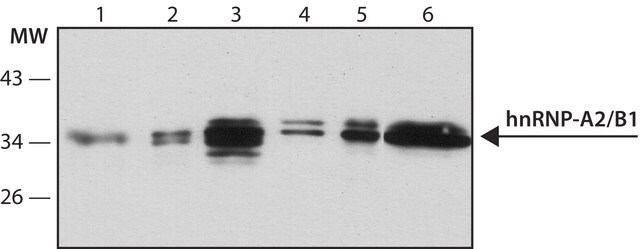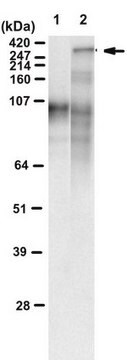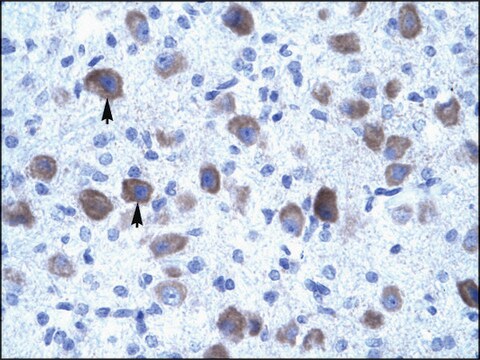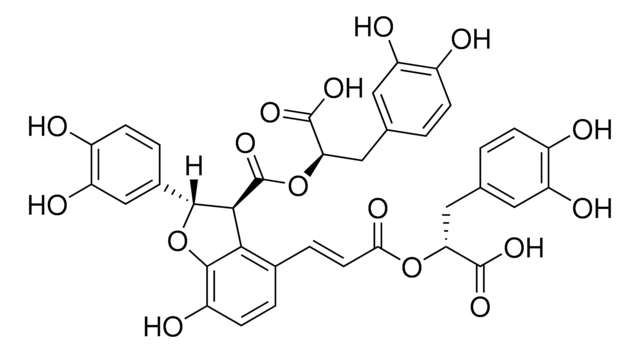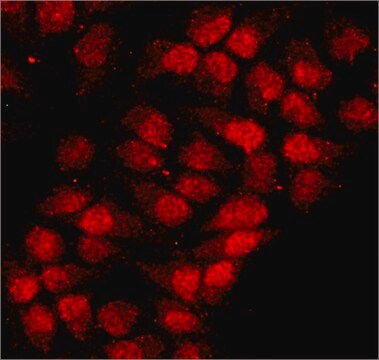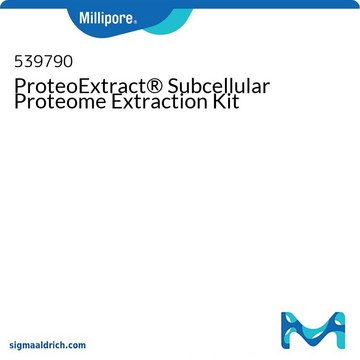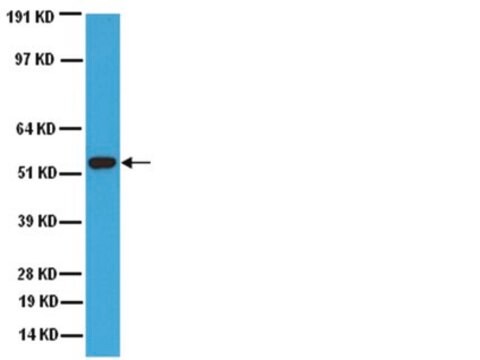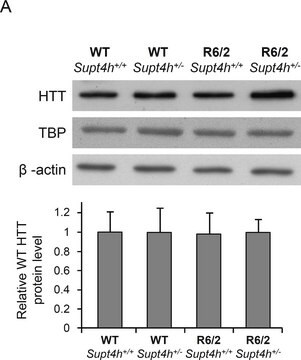MABN1788
Anti-FMR1polyG Antibody, clone 9FM-1B7
ascites fluid, clone 9FM-1B7, from mouse
Sinónimos:
FMR1polyG, FMRpolyG, FMR1 RANT, FMR1 repeat-associated non-ATG-initiated translation, FMR1 repeat-associated non-AUG-initiated translation, Fragile X mental retardation protein 1 gene RANT
About This Item
Productos recomendados
biological source
mouse
Quality Level
antibody form
ascites fluid
antibody product type
primary antibodies
clone
9FM-1B7, monoclonal
species reactivity
human
technique(s)
immunohistochemistry: suitable
western blot: suitable
isotype
IgG1κ
UniProt accession no.
shipped in
dry ice
target post-translational modification
unmodified
Gene Information
human ... FRAXA(2477) , FRAXA(108684022)
General description
Specificity
Immunogen
Application
Western Blotting Analysis: A representative lot detected an exogenously expressed FMR1polyG EGFP fusion construct corresponding to 5′UTR of FMR1 with 50 CGG repeats (Buijsen, R.A., et al. (2014). Acta Neuropathol. Commun. 2:162).
Neuroscience
Neurodegenerative Diseases
Quality
Western Blotting Analysis: A 1:2,000 dilution of this antibody detected an exogenously expressed FMR1polyG GFP fusion construct in transfected COS cells.
Target description
Physical form
Storage and Stability
Handling Recommendations: Upon receipt and prior to removing the cap, centrifuge the vial and gently mix the solution. Aliquot into microcentrifuge tubes and store at -20°C. Avoid repeated freeze/thaw cycles, which may damage IgG and affect product performance.
Other Notes
Disclaimer
¿No encuentra el producto adecuado?
Pruebe nuestro Herramienta de selección de productos.
Optional
Storage Class
12 - Non Combustible Liquids
wgk_germany
WGK 1
flash_point_f
Not applicable
flash_point_c
Not applicable
Certificados de análisis (COA)
Busque Certificados de análisis (COA) introduciendo el número de lote del producto. Los números de lote se encuentran en la etiqueta del producto después de las palabras «Lot» o «Batch»
¿Ya tiene este producto?
Encuentre la documentación para los productos que ha comprado recientemente en la Biblioteca de documentos.
Nuestro equipo de científicos tiene experiencia en todas las áreas de investigación: Ciencias de la vida, Ciencia de los materiales, Síntesis química, Cromatografía, Analítica y muchas otras.
Póngase en contacto con el Servicio técnico